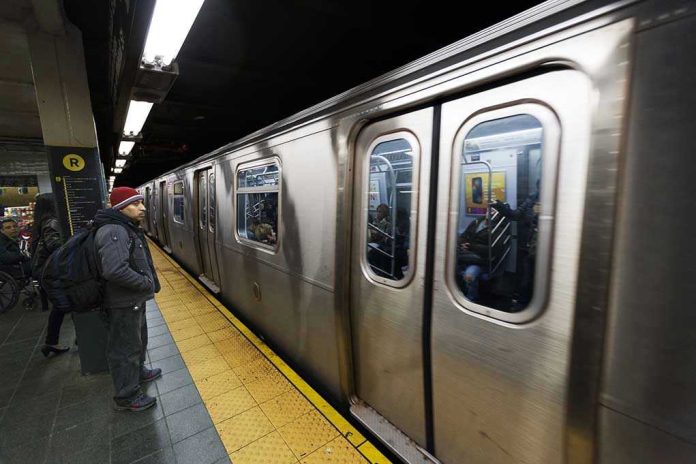
Trump cuts funding for California’s $135 billion ‘Train to Nowhere’ after years of delays and ballooning costs, leaving the state’s high-speed rail project in jeopardy.
At a Glance
- Trump removes $4 billion in federal funding from California’s high-speed rail project.
- Project costs have skyrocketed to $135 billion with no operational high-speed track.
- The Biden administration previously restored funding, but project progress remains stalled.
- U.S. Transportation Secretary declares lack of viable future for the rail initiative.
Federal Funding Cut for California’s Rail Dream
President Trump has pulled the plug on $4 billion in federal funding for California’s high-speed rail project, a move that could be the final nail in the coffin for this beleaguered initiative. Originally conceived in the 1990s as a visionary infrastructure effort to connect major cities with an 800-mile network, the project has devolved into a cautionary tale of bureaucratic overreach and fiscal irresponsibility.
Plagued by delays and escalating costs, the rail project has been under construction since 2015 but has yet to see a single mile of operational high-speed track. Despite receiving over $2 billion in initial federal stimulus funds under the Obama administration, the project has faced a relentless series of setbacks. In 2025, U.S. Transportation Secretary Sean Duffy released a damning audit stating, “there is no viable way forward” for the train, which has cost taxpayers $15 billion so far without yielding tangible results.
A History of Mismanagement and Overspending
The California High-Speed Rail project was championed by state leaders as a solution to the state’s congested highways and airports. Voters approved Proposition 1A in 2008, authorizing $9.95 billion in state bonds with an ambitious completion target of 2020 and an initial cost estimate of $33 billion. However, as the years rolled on, the project became an emblem of governmental dysfunction, with costs ballooning to over $100 billion by 2014 and completion pushed back by decades.
Governor Gavin Newsom attempted to scale back the project in 2019, focusing on the Central Valley segment amid spiraling costs and delays. In a desperate bid to revive the floundering project, the Biden administration restored $1 billion in federal funding and later added $6 billion. Yet, the project continued to flounder, with a staggering $135 billion price tag and no completed high-speed service.
Implications for California and Beyond
The decision to withdraw federal funding has significant implications for California’s transportation future and the broader national conversation on infrastructure. Critics of the project argue that the state has wasted billions on a pipe dream, with taxpayers shouldering the burden of a government boondoggle. The U.S. Department of Transportation’s recent statement that the projected total cost “could buy every San Francisco and LA resident nearly 200 roundtrip flights between the cities” underscores the project’s financial absurdity.
For the Central Valley, where construction jobs have offered some economic activity, the funding cut may lead to further uncertainty and disruption. Urban centers like San Francisco and Los Angeles, which were promised a high-speed rail solution to ease congestion, remain stuck in limbo. Taxpayers, who have watched costs soar with little to show for it, are left questioning the competence of government leaders who assured them of the project’s viability.
Lessons for Future Infrastructure Projects
The California High-Speed Rail project serves as a stark reminder of the dangers of overambitious planning combined with inadequate oversight. Experts across the board agree that the project’s initial business plan was flawed, lacking realistic cost assessments and ridership projections. Starting construction in the less populated Central Valley instead of high-demand urban corridors has been widely criticized as a strategic misstep.
As the project lurches towards an uncertain future, it stands as a testament to the need for transparency, accountability, and realistic planning in public infrastructure. If there is any silver lining, it may be that the trials of California’s high-speed rail will prompt much-needed reforms in how large-scale projects are managed in this country. For now, though, the ‘Train to Nowhere’ serves as a cautionary tale for policymakers and taxpayers alike.
Sources:
Wikipedia: California High-Speed Rail
Wikipedia: History of California High-Speed Rail
California High-Speed Rail Authority
Hoover Institution: California’s High-Speed Rail Was a Fantasy from Its Inception









